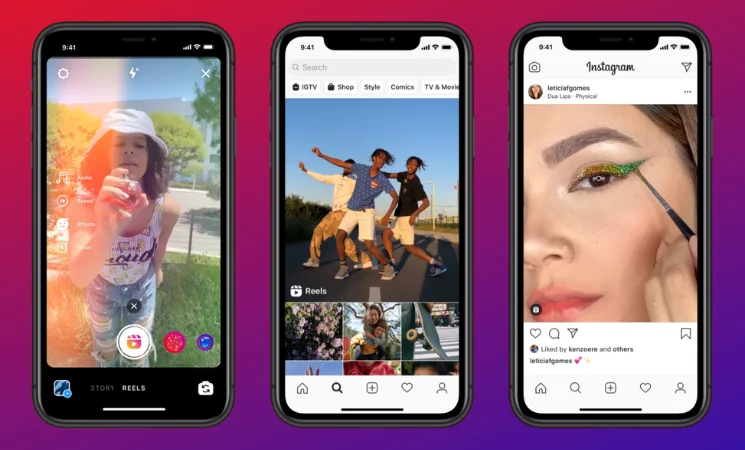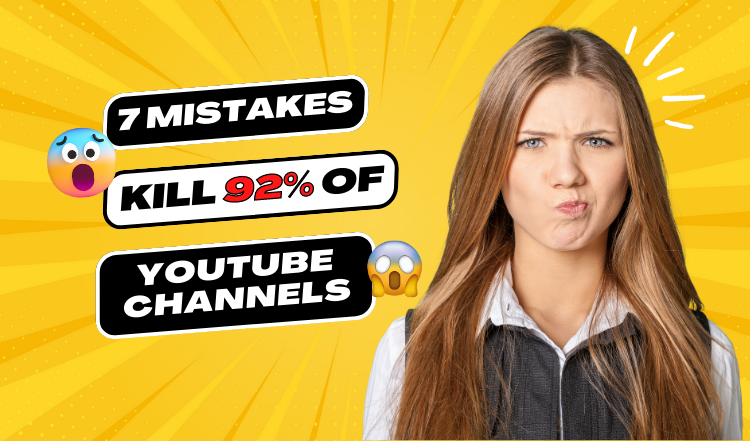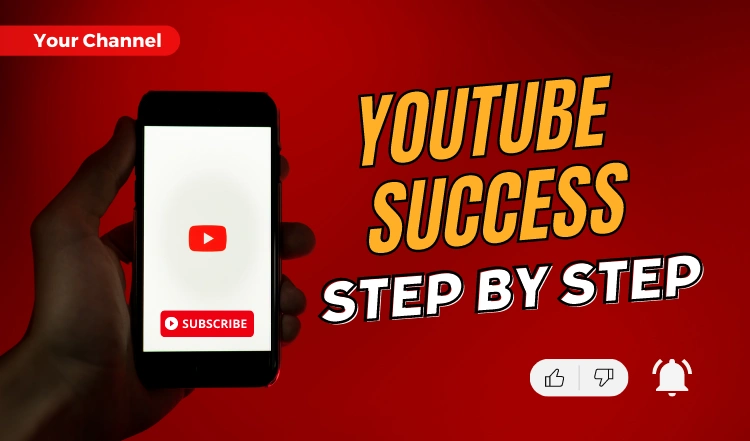Following the explosive success of TikTok over recent years, rival social media platforms such as YouTube and Instagram are increasingly investing in their short-form video content features to try and compete. Instagram Reels and YouTube Shorts enable users to share snappy, engaging content that’s primed to go viral.
There’s a reason for the explosive growth of short-form video content. Our attention spans are getting shorter, making it more difficult for marketers to hold our focus.
In fact, according to one study commissioned by Microsoft, we are now less attentive than the average goldfish.
Social media platforms are increasingly promoting their short video features, holding users’ attention, and keeping them on the platform for longer. A short video can be watched, and then it can be followed up with another video relatively quickly.
Video is increasingly why people go to social media, and they’re accessing it primarily on their smartphones and other mobile devices.
Short-form video is the future because of its accessibility, the benefits it brings both to the platforms and users, and its flexibility.
Long, in-depth guides, product demos, company introductions, and other longer-form content tends to be created to last. It’s designed to remain relevant despite the passage of time. Short-form videos take less time to produce and can therefore be more responsive to current trends.
They allow you to use trends to add value to your marketing propositions and reflect current events.
Short-form video content works brilliantly with social media, its key advantage. Every business needs to have a well-thought-out social media strategy, but it’s getting increasingly difficult to notice.
Creating short-form videos doesn’t mean that you’re guaranteed to stand out from the crowd, but you’re giving yourself a good chance of being noticed.
The most potent and influential social network content currently is microblogging. This combines some narrative elements of longer-form blogging with the immediacy of instant messaging. A platform that epitomizes this approach is Twitter, and it’s no surprise that short-form video features heavily.
Short-form content can be shared quickly and easily. It commands an instant response. All of your branded content needs to be optimized for the chosen mode of delivery. This makes short-form video a natural fit for social channels where snappy, easy-to-digest content that makes an instant impression can have a considerable reach.
Some of the most effective social media content has captured the zeitgeist, taking on a life of its own. If your brand strikes lucky with its short-form content, the opportunities are practically limitless.
Short-form content allows you to tap into current trends, allowing your branding to connect with something instantly familiar. As a result, it’s likely to be shared and seen more often.
The trends look increasingly clear. Due to its brevity, accessibility, and agility, short-form video meets the needs of both marketers and consumers and proves beneficial commercially to the platforms that host it.
Your business needs to develop a short video strategy that makes the best use of the form.
Because of the brevity of the medium, many businesses are tempted to create videos themselves. While this can sometimes work, there is a high risk that your video will miss the mark. Short videos need to have an immediate impact.
You have much less time to convey your marketing message. Your video must be as professional as possible.
Instagram Reels versus YouTube Shorts
Now that we’ve covered the advantages of shorts and reels, and how competitive the two formats are, let’s get specific. Should you be focusing on Instagram Reels or YouTube Shorts? After all, the short video space is one of the most highly demanded content formats on social media platforms in the last few years and growing steadily. If you’re selling online, you can’t ignore this medium.
While the market was earlier dominated by the video-sharing giant TikTok, it was soon taken over by several other brands that followed the same system.
Instagram Reels were released earlier than YouTube shorts and took over the market gradually with its set of filters, edits, transitions, animations and other interesting options to choose.
The popular image-sharing platform informed their users that republishing content from other similar sites may make their videos less discoverable to the audience, hence only original content got the most space on the site.
Initially, YouTube shorts was launched in a beta version for the users and received high organic traffic and other benefits. It had almost the same features as Reels, yet, creators tried their luck with the algorithms associated with a new style of content on YouTube.
For a true comparison of both social media short video formats, we must break them down by category or marketing benefit.
Organic traffic and reach
Initially, both the content formats on social media were launched as beta versions of themselves to be tested for their capacities. Here, Instagram Reels versus YouTube Shorts depends on the hashtag choices of creators when we discuss the reach.
YouTube shorts function with the trending hashtags that help the content stay on the trending list, as well as niche hashtags that helps the creator find a specific audience.
The overall reach and organic traffic of a YouTube channel are more likely to get more views as it will be shown on the channel’s shorts regularly.
Comparatively, Instagram Reels gradually became a much-saturated space with videos depending on the personal preference and type of content mostly watched by the particular user. Instagram works according to followers and their choice of content type, hence, there can be less organic traffic comparably.
Winner For Reach and Traffic: YouTube Shorts (screenshots below)

Overall tone, formal versus fun
Instagram Reels is mostly known for lip sync videos, duets, trending content on some popular music from its library and similar fun-filled, action and drama content.
On the other hand, YouTube Shorts is more inclined towards professionally made short videos that are more preferable for advertisements and monetizing.
Instagram Reels Vs YouTube Shorts is best summarized by their type of content and creators. When the reels are more of the talent showcase of the influencers and users, YouTube Shorts is more of mindfully made serious content designed to support the growth of the platform.
Winner For Tone: Both, based on your brand identity. Instagram Reels are informal and more interactive, whereas YouTube Shots are more professional.
Engagement and interaction
YouTube Shorts are yet to catch up with the quick craze gathered by Instagram Reels. Even though Reels has stuck with the organic traffic generation, any creator with more loyal followers or a great network of people to share their Reels on their story can have more chances of winning it there too.
On Instagram, people can share their Reels in stories and get more engagement that can also lead to organic reach. If a content creator is great with live sessions, posts, stories and other interactive forms, they can surely get more interaction.
YouTube Shorts has barely any space to get the YouTuber interacting with their respective subscribers.
Winner For Engagement and Interaction: Instagram Reels (screenshots below)
Timeframe and video duration

Instagram Reels can be recorded between 15 and 30 seconds, whereas YouTube Shorts are of 60 seconds. This indicates that the creators on YouTube have more scope and time to retain the attention of viewers compared to an Instagram influencer.
YouTube as discussed above is more professional hence the audience growth is slower but time and appropriate promotion of longer shorts in the shorter videos can help enhance the views.
This will gradually increase the traffic, thereby making the content eligible for monetization.
Instagram Reels are mostly watched by our followers that are mostly constituted of friends and family. It may not gather any new view or reach, but get a sudden spike of audience views and overnight fame.
Instagram Reels Vs YouTube Shorts is a tug-off between the two most popular social media platforms.
Here the former is more of a short-lived, quick fame, casual entertainment-focused site while the latter is a long-term, patience-demanding, profitable and professional platform.
Users must pick their choice according to their objectives and interest in content creation and entertainment.
Key takeaways
Let your buyer persona, audience and branding decide whether you focus on a more fun, vibrant and entertaining videos of Instagram Reels or a higher-end, professional look of YouTube Shorts.
If you’re selling toys, baby products, fun or casual accessories, focus on Instagram Reels at first.
Now, if you’re selling business services, or products to a professional market, try YouTube Shorts initially.





